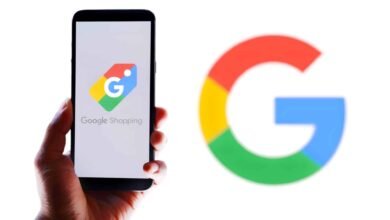Amazon Ditches Google Ads: What Optmyzr’s Study Reveals

▼ Summary
– Amazon abruptly stopped advertising on Google Shopping on July 23, 2025, leaving a significant gap in auctions.
– Optmyzr’s study found that after Amazon’s exit, clicks increased by 7.8% and costs decreased, but conversion value dropped by 5.5%.
– The “volume trap” occurred as shoppers clicked competitor ads but expected Amazon-level pricing and service, leading to more traffic but less valuable conversions.
– Electronics was the only category that saw significant gains in conversions and ROAS, while others like Home & Garden and Sporting Goods struggled with lower value.
– Advertisers should focus on differentiating their offerings and measuring value-based metrics rather than chasing volume to avoid the negative impacts of the volume trap.
When Amazon unexpectedly pulled its advertising from Google Shopping in late July 2025, the digital marketing world took notice. The sudden departure of one of the platform’s largest spenders created immediate shifts in auction dynamics, offering a rare glimpse into what happens when a dominant player steps away. While many expected a windfall for remaining advertisers, the reality proved far more complex, and revealing.
Optmyzr’s analysis compared performance during the week following Amazon’s exit to the previous seven-day period, carefully controlling for external factors like Prime Day. The initial numbers appeared encouraging: impressions climbed by 5%, clicks increased by nearly 8%, and costs actually dipped slightly. Even more appealing, the average cost-per-click fell by more than 8 percent. On the surface, it seemed like a golden opportunity for retailers to capture more attention at a lower price.
But a closer look at conversion metrics revealed a different story. Despite the surge in traffic, conversion volume remained stagnant. More concerning, the value of those conversions dropped by 5.5%, while conversion rates and return on ad spend both declined. In short, advertisers attracted more clicks, but those clicks translated into less revenue.
This phenomenon is what marketing experts refer to as the “volume trap.” Shoppers accustomed to Amazon’s pricing, speed, and reliability clicked on competitor ads but often failed to complete purchases when other retailers couldn’t match that experience. The influx of traffic looked promising in reports, but it didn’t deliver meaningful bottom-line results.
Fred Vallaeys, a respected voice in performance marketing, emphasized that not all traffic holds equal value. When Amazon left, many shoppers clicked on ads for similar products but ultimately returned to Amazon’s ecosystem due to deeply ingrained trust in its delivery promises, pricing consistency, and frictionless checkout. This behavior underscores a critical lesson: you can’t simply replace Amazon’s clicks and expect identical outcomes. Success requires a differentiated value proposition, whether that’s superior product quality, personalized service, or niche expertise, that Amazon can’t easily replicate.
Category performance varied widely in the wake of Amazon’s departure. Electronics emerged as a clear winner, with clicks rising 11.5% and conversions skyrocketing by over 80%, all while maintaining stronger return on ad spend. Retailers in this space often compete effectively on fulfillment and consumer trust. In contrast, Home & Garden advertisers saw traffic jump 13% but suffered a 7.5% drop in conversion value. Sporting Goods, Health & Beauty, and other categories also grappled with the volume trap, gaining clicks but losing per-sale value.
For marketers, these findings highlight the importance of focusing on business outcomes rather than vanity metrics. Leadership teams care about profit and sustainable growth, not click volume or impression share. When discussing performance shifts with executives, it’s essential to frame results in terms of revenue impact and customer quality, not advertising jargon.
The big question remains: will Amazon return to Google Ads? While no one can say for certain, many analysts believe the absence may be temporary, a test of incrementality or an operational pause following Prime Day. If history is any guide, Amazon will likely reinstate its presence during peak shopping periods like Black Friday and Cyber Monday. Whenever that happens, advertisers should be prepared to refocus on fundamentals: smart budgeting, precise targeting, and rigorous conversion tracking.
Amazon’s exit offers a valuable lesson for all digital advertisers. Reduced competition doesn’t automatically translate into better performance. Instead, it exposes the need for clarity in measurement and differentiation in positioning. Retailers who thrive in this new environment will be those who emphasize what makes them unique, and who relentlessly track what truly matters: profitable customer relationships.
(Source: Search Engine Journal)





